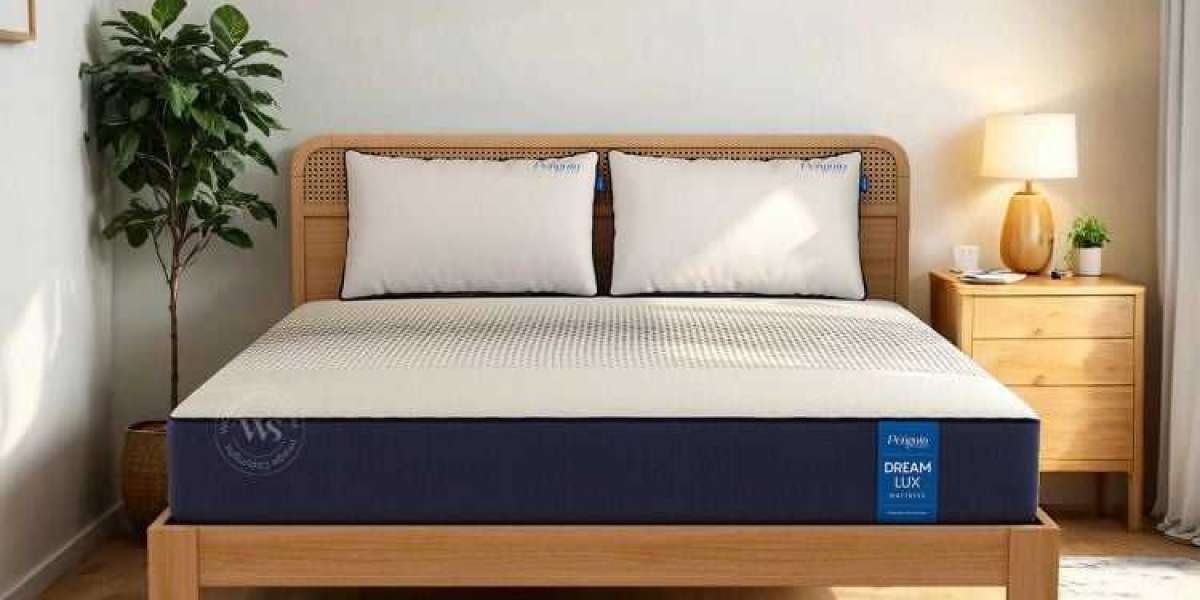When you’re ready to upgrade to a king‑size mattress, the array of choices—materials, firmness levels, price points, and features—can feel overwhelming. This comprehensive buyer’s guide breaks down everything you need to know to choose the perfect king‑size mattress for your sleep style, bedroom space, and budget.
1. Why Choose a King‑Size Mattress?
A standard king mattress measures 76” wide by 80” long, offering ample room for couples, children, or pets. Compared to a queen (60”×80”), a king provides 27% more sleeping surface—a boon for restless sleepers or those who share their bed. Benefits include:
Extra Space: No more elbow jabs or tangled limbs.
Couples’ Comfort: Each partner gets a “personal territory.”
Versatility: Room for reading, working on a laptop, or playing with pets.
However, confirm your bedroom is large enough—ideally at least 12’×12’—to allow for bedside tables and walking space.
2. Mattress Construction Types
King‑size mattresses come in several constructions. Understanding each will help you target the right feel and performance:
Innerspring Mattresses
Construction: Steel coil support core topped with foam or fiber layers.
Feel: Bouncy and responsive with strong edge support.
Best For: Stomach/back sleepers, those who prefer a traditional mattress feel.
Considerations: Can transmit motion, may lack contouring.
Memory Foam Mattresses
Construction: Layers of viscoelastic foam that mold to your body.
Feel: Plush, pressure‑relieving hug.
Best For: Side sleepers, pain‑relief seekers, those who want motion isolation.
Considerations: Can sleep hot; look for gel‑infused or open‑cell foams.
Hybrid Mattresses
Construction: Coil support core combined with foam or latex comfort layers.
Feel: Balance of bounce and contouring.
Best For: Combination sleepers, couples seeking compromise between support and pressure relief.
Considerations: Pricier; weight can make moving difficult.
Latex Mattresses
Construction: Natural or synthetic latex layers, sometimes over coils.
Feel: Responsive, buoyant, and cooler than memory foam.
Best For: Eco‑minded shoppers, those wanting a durable, resilient surface.
Considerations: Can be expensive; heavier to maneuver.

3. Firmness Levels and Sleeping Positions
Firmness preference is subjective, but your primary sleeping position offers good guidance:
| Position | Recommended Firmness | Why |
|---|---|---|
| Side Sleeping | Soft to Medium (3–5/10) | Cushioning at shoulders and hips. |
| Back Sleeping | Medium to Medium‑Firm (5–7/10) | Spinal alignment with moderate contour. |
| Stomach Sleeping | Medium‑Firm to Firm (6–8/10) | Prevents hips from sinking too deeply. |
A king‑size mattress generally amplifies any firmness variation—so test in‑store or via generous trial periods.
4. Key Features to Consider
Edge Support: Critical for full‑use of the mattress surface and easier in‑and‑out of bed.
Motion Isolation: Foam and hybrid models often excel, ideal for couples.
Temperature Regulation: Look for breathable covers, gel or copper infusions, phase‑change materials, or coil cores.
Durability Warranty: A good king‑size should last 7–10 years. Check for at least a 10‑year warranty.
Trial Period Return Policy: Many brands offer 100‑night trials; ensure returns are hassle‑free.
5. Price Ranges Budgeting
King‑size mattresses vary widely in price:
Budget ($300–$800): Entry‑level innerspring or foam mattresses, shorter warranties, may lack advanced features.
Mid‑Range ($800–$1,800): Better foams, hybrids with pocketed coils, longer warranties, trial periods.
Premium ($1,800+): Luxury materials (natural latex, advanced foams), superior build quality, extensive trial periods, white‑glove delivery.
Factor in additional costs for foundation/bed frame, sheets, and potential delivery fees.
6. Measuring Preparing Your Bedroom
Before ordering:
Measure Floor Space: Account for the mattress footprint (76”×80”) plus 2–3 feet clearance on all sides.
Doorways Hallways: Confirm the mattress can navigate tight corners or stairwells.
Bed Frame Compatibility: Ensure your frame supports a king mattress. Some adjustable bases and platform beds have size limits.
7. Shopping Tips Final Checklist
Research Top-Rated Brands: Read reviews from multiple sources, including verified buyers.
Compare Trial Policies: Longer trials reduce risk.
Check Shipping Setup: Free white-glove delivery can be worth the extra cost.
Inspect Return Fees: Some companies charge return shipping or restocking fees.
Look for Sales Events: Major holidays often bring deep discounts.
Conclusion
Choosing the perfect king‑size mattress boils down to balancing your budget, preferred feel, and desired features. By understanding construction types, firmness levels, and key conveniences—plus measuring your space accurately—you’ll rest assured you’ve made a well‑informed decision. Sweet dreams await on your new king‑size haven!







